In this post, I’m going to share everything I know about attracting and winning better WordPress website clients with decent budgets into your business. You need to read the whole post. If you're going to do this, commit to it and I promise you it can be done.
This post is part mindset and part tactical. I don't believe the tactics are valuable without the right mindset, so if some of this feels a bit “Woo Woo”, try and sit with that feeling and do it anyway. What have you got to lose?
How to Attract and Win Better WordPress Website Clients Today
I can assure you, I have seen inside hundreds of WordPress consulting businesses over the years and have witnessed this process work time and time again. We run a private Facebook Group for Agency Mavericks members and we regularly get posts like this turning up:
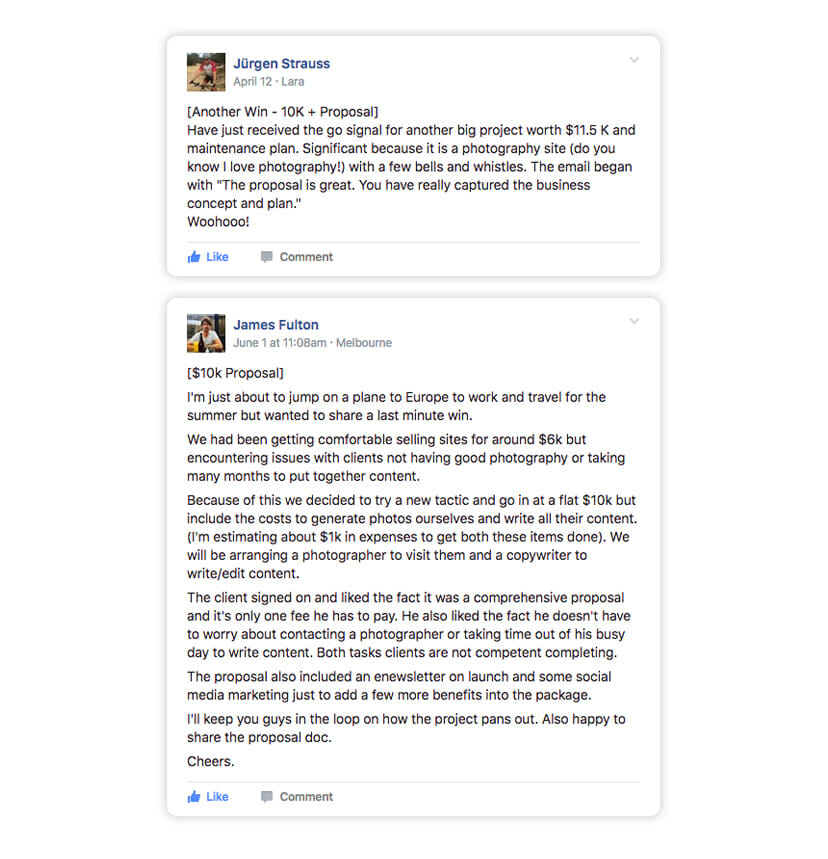
If I hear you complaining in the future about the type of clients you have, then I will know it’s because you haven’t done the work; not because I haven’t tried to help you. The clients you have in your business are a reflection of you.
Clients who believe a website should cost no more than $500…
Clients who think they are designers…
Clients who tell you which plugins to use…
If you've managed to avoid these types of clients altogether, then congratulations. You are in the minority. However, if these clients sound a lot like the ones you’re dealing with, and you're unhappy and want to make a change, you only need to look in the mirror and ask yourself how you attracted them.
”But I Need The Money.”
I hear you. We all need money to survive.
However, taking on a low value project usually results in spending a lot of time managing client expectations because, generally speaking, clients with low budgets are taking the money out of their own bank accounts rather than a marketing budget. This means their expectations are difficult to manage and they are usually more emotional about the project. In my experience, these projects always a blow-out and are never profitable.
Here's the thing about profit:
You owe it to yourself and your clients to run a profitable business. If you cannot sustain yourself in business you will ultimately be unable to serve your clients because you will have to get a job working for someone else.
So, whatever hangups you've got about making a profit, I suggest you put them aside right now and read the rest of this post.
Low budget, low value clients tend to refer more low budget, low value clients as well, so once you're stuck in this cycle it's difficult to break out.
Unless you decide to.
By the way, as far as I'm concerned, this is a two-year play. If you need clients tomorrow because you're broke, you should get a part-time job to pay the bills while you focus on this. I was a gigging musician around town when I started out so I never came across as “desperate”, because I wasn't.
But if you're serious about getting better WordPress website clients, well, then you're due for a change.
A Word on Cold Calling
Don't do it. It's annoying for the person you are calling and it's embarrassing and desperate. More importantly, there's no need to do it.
I once cold-called 50 of the fastest-growing companies in Australia, had four conversations and won only $1,700 worth of business. I scrubbed myself afterwards to get rid of the dirty feeling that covered me. Warm call if you absolutely have to. More about that in another post. For now, just know that I will NOT be advising you do any cold calling. So relax.
"I'll Get Better Clients Eventually."
Wrong. I hear this a lot. I also hear:
“I'll get better clients when I've got more experience and I'm a better designer/developer.”
Do you really think clients are going to contact you out of the blue and say, “Hey Matt, I heard you've been putting in some long hours learning new skills at Creative Live. We have a $20K budget for our new WordPress website. Can we hire you?”
This is a reflection of your mindset. You can start at the low end of town and spend your entire career walking uphill to where the money is or you can start at the upper end of town.
Landing a $25K website requires the same amount of work as landing a $2.5K website. The difference is that a client who is prepared to invest $25K in their website has the capacity to get a positive return on investment and benefit from the project. A $2.5K client does not.
If you need to shift your mindset from one of scarcity to one of abundance, I suggest you read Abundance by Peter Diamandis and Steven Kotler.
You are not obliged to serve low value, low budget clients if you don’t want to. I'm not saying these clients don't deserve to get the help they need, I'm just saying you have a choice.
The best time to start targeting higher value WordPress website clients was yesterday. The second best time is now.
There's No Magic Bullet

The truth is that winning better clients with interesting projects and healthy budgets requires you to get off your butt and do some work.
I’m sorry to disappoint you so early on in our relationship, but perfect clients do not fall out of the sky and land in your lap. There is no WordPress plugin, Facebook app or $17 ebook that will get you more clients. There is also no need to go looking for them because, despite popular opinion, they are not hiding from you.
They are waiting to be served.
There is, however, a simple step-by-step process you can follow to attract the right client to your business. It may be a simple process, but it requires hard work to execute it well, and the only person that can do that is you.
If you're tired of low value, low budget clients chewing up your time and micromanaging you into the liquor cabinet, or if you're just starting out and you want to avoid falling into that trap, this post is for you.
What to Expect From This Guide
This guide may also be helpful if you're just exhausted by your WordPress consulting business and you need to breathe some fresh air into it.
In the following guide to winning better WordPress website clients, I'm going to help you:
- Get clear about your value offering and who it’s meant for.
- Create your own influencer identity in the marketplace.
- Differentiate yourself from everyone else by commanding attention.
- Produce content that attracts attention from the right people.
- Avoid wasting time on clients who are a time and profit drainer.
In the interest of transparency, my mentor Ed Dale was the man who coached me through the mindset required to pull this off and I've borrowed some of these ideas from what he taught me, especially the stuff about the Top 20 which I'll cover a little later.
Let’s make a deal: I'll leave no stone unturned here. In exchange, you will roll your sleeves up and be prepared to get out of your comfort zone, write some stuff down and take massive amounts of imperfect action.
Sound good? Then let's begin with this first important step…
There are four sections below and each section has a corresponding worksheet which you can download here:
Who Do You Serve?

Here's how business works:
Clients pay you money in exchange for the value you add to their business. If you're doing it well, your clients will perceive the value they are receiving as greater than the money they are paying. If you're doing it really well, you will be constantly optimising your business processes internally so you can extract a profit from that revenue on the way into the business (more about that in another post someday).
Imagine a world where your WordPress business makes a hefty profit. Every. Single. Year.
Make no mistake, you will not get paid by clients unless you are adding value to their business.
The key to building a great business is to only work with clients who absolutely love you and love what you do. It’s how you get referrals and eliminate the usual stress that goes along with client work. It's also how you add massive value, which is the only way to get paid higher fees.
The secret to only working with clients who love you, is to identify those clients who stand to benefit the most from what it is you do. It is these clients you should aim to serve better than anyone else.
For example, if you are excited by e-commerce but not particularly strong at it, then chances are you're not going to be able to help a client with an online store hit a massive home run. If you're great with conversions, a client with zero traffic is not going to appreciate your value as much as a client with lots of traffic. If you have an ethical problem serving a particular client then that tension is going to prevent you from knocking it out of the park.
It is possible to engineer your business so that you are constantly swimming downstream and catching hungry fish who are already jumping.
Let's begin by identifying your sweet spot.
What are you good at and what do you enjoy?
It's no secret that building your own business is hard work. The majority of small businesses fail within the first 2 years. It helps if you enjoy what you’re doing. It also helps if you have a natural aptitude for it.
Ask yourself the following two questions and be honest with yourself about the answers.
- What am I good at?
- What do I enjoy doing?
I've always found that writing something down gets it out of your head and body and makes it real.
Open “Worksheet 1 – Who Do You Serve?” and work through the following:
Skills
In the Skills column, write down what your skills are, where you’re really strong. And BE HONEST about it.
For instance, I’m not fooling myself into thinking I’m a good designer. I’m good with people and understanding a client's problem and designing an overall solution. Brainstorm as many ideas as you can and reflect on everything you have ever done on a client project or one of your own hobby websites.
Have you found a really efficient way of speeding up a new WordPress installation? Are you a Desktop Server ninja? Are you a WooCommerce shipping rockstar? Fancy yourself at importing large CSV files?
It doesn't matter at this stage whether or not you enjoy any of these tasks. What matters for the purpose of this exercise is whether or not you have a skill. You should be able to fill a full column with your skills.
Passion
Now, in the Passion column, write down everything that you LOVE doing, everything that you’re passionate about. Even if you’re really bad at it.
For me, it's design. I love it, but I suck at it. I love WooCommerce but I'm not strong at. I love the idea of being a CLI developer but it ain't never gonna happen. I also love podcasting, public speaking, running live events, webinars, blogging and interacting with clients and customers.
Think about all the aspects of your business and answer the question honestly. What do you really love doing?
If you’re passionate about it, write it in the Passion column, regardless of whether or not you’re good at it.
Your Sweet Spot
Your sweet spot is the interconnection of your skills and your passion. This is where you are most valuable and this is where you should spend most of your time. Find what’s common between your Skills and Passion.
Maybe you love SEO and you’re really good at it. That’s great! Be honest with yourself about these answers. Find where your skills and passion overlap.
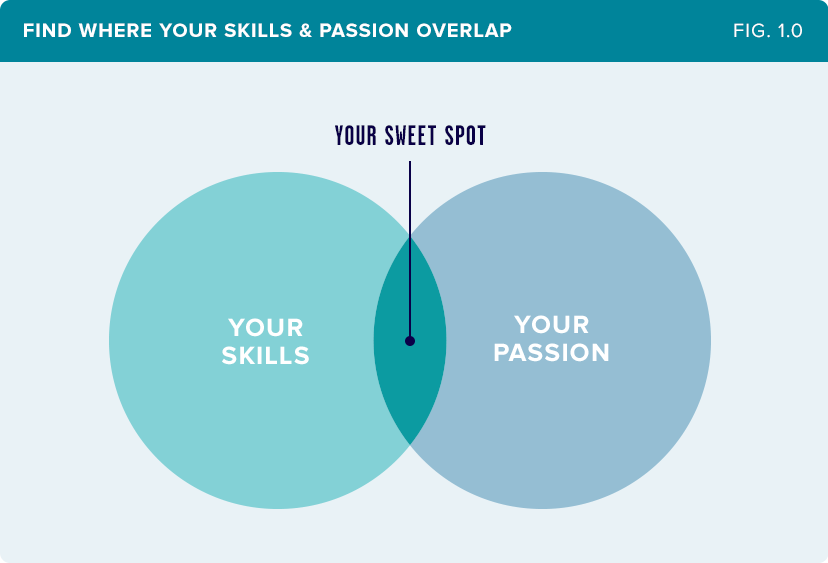
Next, write down the five things you want to do in your business over the next two years because this is where you should be focusing 90% of your effort.
The five things that you’re really good at and passionate about. There are no rules, restrictions or impossibilities. For example, one of the 5 things that I’m really is good at and love doing is presenting. So I want to present more all around the world.
Try not to limit your thinking or imagination by what you understand as the traditional business model of a web designer or web developer. This is your business and you can design it however you wish. In fact, if you don't design your business to play to your strengths and to suit your sweet spot you will be forever swimming upstream and you will end up exhausted, miserable and broke.
When I interviewed Seth Godin on the Agency Mavericks podcast, he quoted his friend Zig Ziglar, who said
“It is better to be a meaningful specific, than a wandering generality.”
So, what are the five things that you’re good at and love that you want to do in your business over the next 2-3 years?
I know this might feel like a grade school exercise and if you think it's a bit naff, then you don't have to do it. But if you don't do it you will still be trawling the Internet looking for “how to find better WordPress website clients” three years from now.
What Benefits Do You Offer?
Now that you've done a little bit of soul-searching. it's time for a reality check.
Nobody really cares about what you're good at.
The only thing people care about is what you can do for them. If you’re really good at SEO, and it’s also what you love doing, ask yourself, “What benefits does a client receive from my SEO?”
Whoever you work with will probably end up with more visitors on their website than they had before. Since you’re good at it and love doing it, you’re going to be more devoted to this area. The benefit is not SEO; that’s the feature. The benefit is that the person you work with will end up with more human beings visiting their website, which should result in more leads and sales.
If your sweet spot is e-commerce, then your clients will end up with an increase in sales (by tapping into a global audience) or an increase in profits (because selling products online generally nets a higher margin than selling products offline).
If your sweet spot is turning Photoshop files into a Genesis child theme in 48 hours, then your client ends up with a faster result which allows them to serve more clients (in the case of an agency) or ship their product to market quicker (in the case of a client project). Either way, no one cares how good you are at turning PSDs into GCTs. What they care about is the end result.
If you have not practised articulating benefits before, then now is the perfect time to start. This epic blog post from our friends at Help Scout might help you understand why benefits sell more than features.
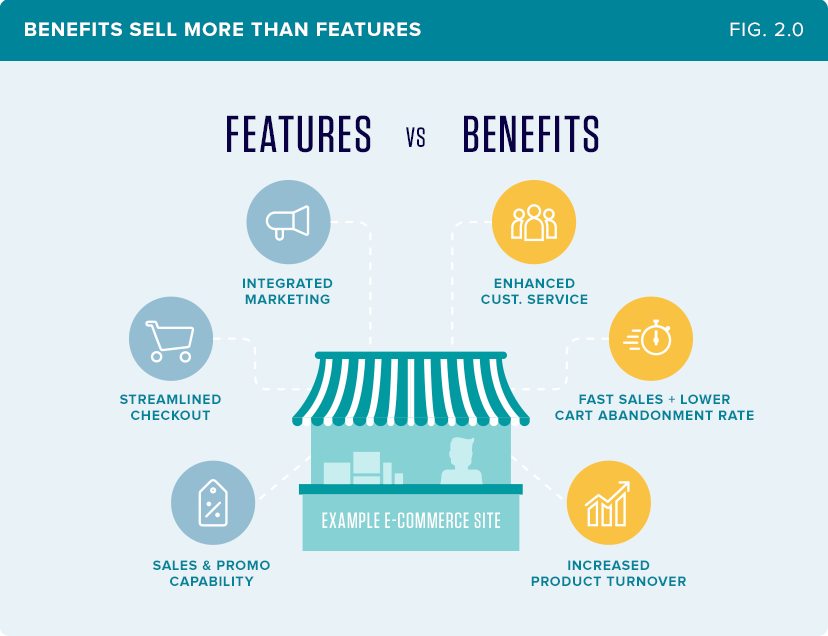
Here's another writing exercise for those of you willing to play along.
Using the worksheet provided, list all the benefits that your clients receive when you use your skills and your passions. Try and list at least ten.
Who Benefits the Most?
At this point, you should be starting to get a picture of the value that you add to your clients. The question you need to ask yourself now is:
“Who stands to benefit the most from what I have to offer?”
Let me give you some examples. If your sweet spot is helping online store owners improve conversions, then who do you think might stand to benefit the most? Our friends at Shopify published this great post outlining 4 checkout conversion killers that drive your buyers away.
On the other hand, if you are an active member of GrowthHackers and specialise in helping early start-ups get tons of traffic, then maybe you're best off scanning Angel.co to find start-ups looking for growth hackers.
The idea behind this exercise is to make sure all of your communications are highly targeted towards those clients who are most likely to benefit from you operating in your sweet spot.
List everyone who could possibly benefit from the skills and passion and benefits that you offer.
For example, I’m good at helping nonprofits capture more email addresses from their websites. So, nonprofits benefit the most. But who exactly? The campaign manager or marketing director who is probably getting heat from the boss about losing regular donors and increasing their donor database.
Bring Them To Life
It's one thing to identify who these potential clients are, but it's another thing to understand what motivates them to spend money on your kind of service.
I can hear you groaning as I write this, but you are going to have to get inside the head of these people to understand their behaviour. Or not. You can of course just allow yourself to be distracted by the next shiny widget that comes across your screen.
We’re going to borrow a formula from John Jantsch, author of Duct Tape Marketing, to bring these people to life and identify them as our ideal client (thank you, John!).
Here’s the formula to bring your ideal client to life:
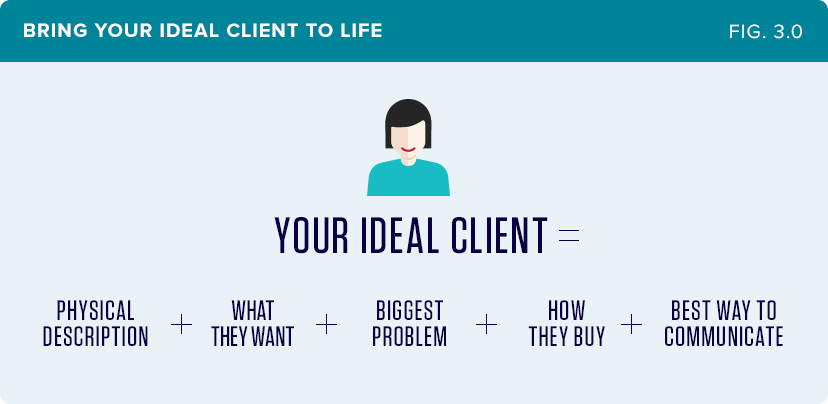
Using your worksheets write down the following:
- Physical Description gives a name, a place and a title to your ideal client.
- What They Want is the outcome they desire.
- Biggest Problem is what’s stopping them from getting what they want; what hurdles do they need to overcome.
- How They Buy is the mechanics of their purchasing process. Do they buy at trade fairs, online, through face to face meetings?
- Best Way To Communicate is where they are currently spending most of their attention. Again, this can be online, at networking events, reading trade magazines.
So now you have an ideal client profile card. We’ll call our example ideal client “Jenny”.
![]()
Jenny is a marketing manager at a medium-sized nonprofit in the Chicago area (physical description).
She is recruiting new ambassadors for their cause and is overwhelmed with tactics but lacks a coherent online strategy (that’s what she wants as well as what her problem is).
Jenny is influenced by the opinions of her peers and spends a lot of time online researching new ideas to try and attract influencers to her organisation (how she buys and the best way to communicate).
Now everything we do is for Jenny. Every blog post, tweet, conference, tutorial. It’s all designed for Jenny. This is who you serve.
The Top 20

So far, we've covered how to define the work that we love doing, how to identify clients who love us and how to bring these clients to life with a client profile card. Now we're going to look at how to start influencing the marketplace so that better WordPress website clients come to us.
Influence
In his excellent book about the psychology of persuasion, Influence, Dr Robert Cialdini notes that the perception of authority is one of the key factors in influencing somebody's decision. If you are seen as an authority in your field, you will be able to exert stronger influence over the marketplace.
The Top 20
In any particular niche, there are at least 20 “rock stars” or powerful, high-profile influencers who are the “celebrities” in the marketplace. Here are just a few of the WordPress rock stars:
The list goes on.
It doesn’t matter what industry you’re in. If you’re in the photography industry, there's Peter Hurley. If you're in the financial services niche in Australia, there's Mark Bouris. If you're in the psychology niche, there's Robert Cialdini.
Your job is to identify who the top 20 rockstars are in your industry and become one of them. Sound like work? It is.
List Your Top 20
Time to engage in some active brainstorming using “Worksheet 2 – Respected Authority”
Fill this sheet with the top 20 rock stars who currently influence the ideal clients that you want to serve with the following:
- Name: Individuals. NOT brand names
- Influence: Give them a score out of 100. How many subscribers do they have and how big of an influence are they out of 100? Matt Mullenweg would be 100 out of 100.
- Contact Details: Email or social handle, anything you have.
- Comments: What is he/she famous for? What is he/she influential in?
So, how do we find the top 20? Research. Boring, I know. Stay on task and don't get distracted by chasing the next shiny object. This is the true work of an entrepreneur. Boring, un-sexy but incredibly valuable.
Go to Google, Facebook, LinkedIn and Twitter. Do your basic research around keywords. Find out who the admins of Facebook groups are. Find out who is being listened to and read the most. Find out who organises local Meetups for your ideal client.
See who the influencers are for particular keywords and niches using tool such as FollowerWonk.
Conference Speakers
Who are the speakers that turn up regularly at conferences in your niche?
There are at least 2 or 3 WordCamps every week of the year. Lawyers have conferences, non-profits have conferences, fleet managers have conferences (I know because my brother gives presentations at them).
Find out who speaks at the conferences in your niche. If you find that your list of influencers includes people who are speaking at conferences already, increase their rating.
Advertisers
Who is advertising in your niche? Advertisers have the attention of your peers already and are paying good money to keep it. Who is advertising to them? Do some research at Zinio and PocketMags.
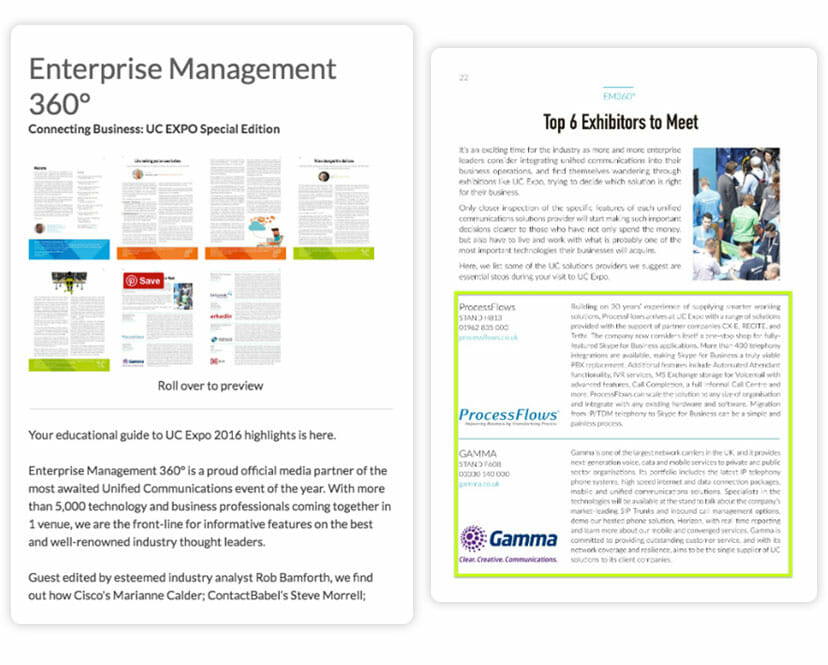
These two large bookshelf apps list thousands of digital magazines. Use these resources to identify who the advertisers are in those magazines. Now find the individuals who work for those companies that have their own blogs. They are already spending money to get the attention from the audience you want.
You want to leverage that audience.

ProTip: Take SEMRush for a Free Trial
Pump those websites into SEMRush and find out which keywords they are advertising for. Remember, this can be done in any industry and any niche. There are always conferences, speakers, and mentors.
Command Attention (Don't Demand It)

So far, we've covered how to define our sweet spot, bring our perfect client to life and identify who influences their purchasing decisions. By now you should have completed the sweet spot exercise, designed your perfect client avatar card and made a start on your Top 20 list.
Seriously, if you haven't done any of this, you cannot expect to start attracting better WordPress website clients with bigger budgets, so pleeeeeease – take lots of imperfect action.
Now we're going to look at the difference between “commanding” attention and “demanding” attention.
Everyone is competing at the same level and your competitors are too scared to do this stuff, so get out of your comfort zone for 20 minutes a day. Stop doing what everyone else is doing and be prepared to:
- Become the most helpful person in your market, categorically.
- Get clear about your message so that you don't sound, smell, talk and walk like everyone else.
- Leverage the crowd that others have built.
Commanding vs Demanding Attention
“Hey, look at this thing I've got! It's awesome and you should buy it!”
If you're constantly telling people that you're the best solution for them, they will tire of you very quickly.
Commanding attention is achieved through demonstrating to people that you can actually help them. If a client arrives at the decision for themselves that you are the right solution, they are far more likely to defend their decision to themselves and any other key stakeholders in their organisation (like a business partner or spouse).

The Big Problem
I hate to break it to you (again), but nobody is going to pay you just because you are cool and you know how to use WordPress. However, they will pay you to help them:
- achieve a goal, or
- solve a problem
Everything we buy — including food, shelter, haircuts, apps, coffee, beer, holidays, property, the new Tesla Model S — is designed to either help us achieve something that we want or avoid something we don't.
Clients will pay you money to solve their problems.
Your job is to understand your market better than anyone else. All you need to do is work out the BIG problem that your market has.
For example, a non-profit doesn't want a new website, they want to improve their donor retention (that is, the number of donors in their database that continue to donate each year).
This is their problem. They need more people to donate. The BIG problem for the non-profit marketing manager may be that her job is at risk if she doesn't improve retention.
Media Cause understand that nonprofits have a challenge with raising funds and getting good return on investment. That's why they write articles about the effectiveness of email marketing for nonprofits on their blog. It's no accident they published this article given their service offering.
Sit quietly and think about the big problem that your market has and write it down on “Worksheet 3 – Generate Mass Leads.”
Brainstorm Solutions
Next, the worksheet will prompt you to brainstorm 3 to 7 solutions that you can provide to this big problem.
For example:
- Make sure your nonprofit is active on social media.
- Make sure they are capturing email addresses from their website.
- Make sure they are following up with effective email marketing.
(By the way, as an aside, these are three of the biggest wins you can get with most clients.)
No time here to join Over-Thinkers Anonymous, just get it done.
Communicating Your Solutions - Briefly
Now there's no point understanding your market's biggest problem and developing some ideas for solutions if you can't communicate this to your ideal client in a succinct way.
A synopsis is a paragraph or two that explains what it is you're proposing. Instead of writing a full blown proposal, just write a synopsis. Write about how what you have solves the big problem that your market is experiencing right now.
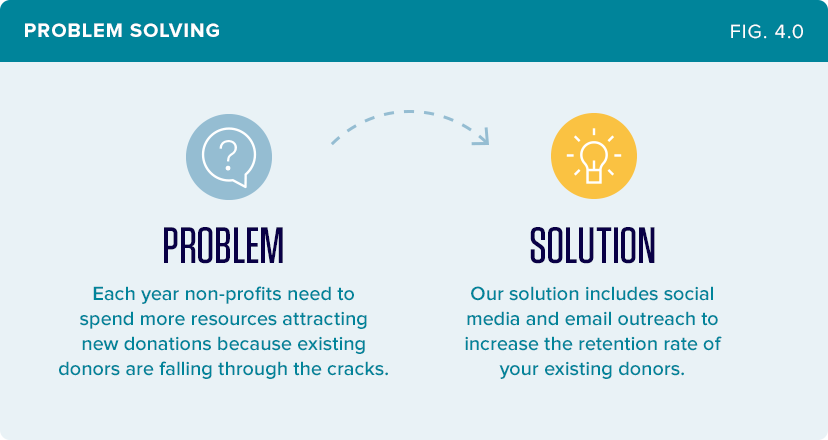
Having a clear synopsis that you understand and can communicate is critical for your entire content strategy. Every time you tweet, post to Facebook, talk to someone on the phone or publish a blog post, you should be communicating your synopsis.
Conference Organisers
People who organise professional conferences can become your best friend as a WordPress consultant. You need to get in front of groups of people and communicate your synopsis and solutions in order to attract leads and clients. Conference organisers need people like you to turn up and impart knowledge and value to their delegates.
Speaking at conferences is the #1 way to generate leads in your market and position yourself as an expert. And guess what? Professional conference organisers have their own industry Association so finding them is not difficult.
Your job is to make it really easy for conference organisers to hire you. This is why your synopsis is so important.
Go back to your top 20 spreadsheet and identify who the conference organisers are that you can call and pitch your synopsis to. You did fill in the Top 20 didn't you?
Use your synopsis to start that conversation with other influential bloggers and podcasters as well.
Your Production Machine

So far, we've covered identifying your sweet spot (so you can play to your strengths), designing your perfect client avatar, identifying the top 20 influencers, becoming super helpful and pitching your synopsis. I hope you've been downloading your worksheets and filling them in.
Most people are trying to become authorities or influencers and failing badly. You need to take a different approach and set yourself apart from your competitors if you want to convince better WordPress website clients to work with you instead of them..
So, I'm going to help you:
- Develop a 12-month content strategy
- Build a production studio machine quickly and cheaply
- Get some scaffolding so if you feel unsure you've got something to hang on to
Producer's Block
In the old days, writer's block was what you experienced when you looked at a blank screen and didn't know what to write. Today, the information is at your fingertips and technology is so easy, so writing and producing some helpful content for your market is a no-brainer.
The problem is: knowing what content to produce and knowing that you have enough content in the pipeline that you can continue to produce good media on a regular basis.
Producer's Block is almost like having too much information. You don't need to be writing or creating the content yourself, but you need to be producing and overseeing it.
Design a 12-Month Content Strategy
This all begins with a list of headlines. Every time you talk to colleagues or clients, you are coming up with problems and solving them for your own use. These conversations are FULL of headlines.
Using “Worksheet 4 – Your Production Machine” write down some headlines. You can pull things out from these conversations and use them as starting points to produce helpful content.
For example, if you specialise in e-commerce, one of your headlines might be “how to reduce cart abandon rate without touching a line of code”. You don't need to write the post or film a video, just collect the headlines. Start collecting as many headlines as you possibly can. Aim for 50.
I once decided to give a presentation at WordCamp called “101 Ways To Elevate Yourself and Demand Higher Fees.”
You guessed it, it all started with 101 headlines in a spreadsheet. Incidentally, that one presentation was sliced and diced into 101 blog posts, 101 videos and 101 podcast episodes as well as a Keynote presentation that we gave away as part of our lead capture strategy.
I'm reluctant to use the “V” word but that one presentation got shared a lot in private forums, Facebook groups, Slack channels and email threads.
It has been, without doubt, one of the biggest lead generator for us.
The Production Studio
Everything you need to produce high-quality, informative and helpful media on a regular basis is probably in your pocket right now. Take out your smart phone and record an audio message outlining one of the problems your market has and use one of your headline ideas to expand on a solution for that problem. Feel free to ramble for 3 to 4 minutes.
Send that recording to Rev.com who will transcribe it for $1 per minute of audio. Send this transcription to a copywriter on Speedlancer and have it written into a blog post. If you're really brave, feel free to publish the original audio along with the blog post no matter how clunky it is. It's great for authenticity and will help position you as an authority.
Scare Yourself
Get out of your comfort zone a little bit. Learn to become comfortable being uncomfortable. Start sharing your content with influencers in your space (not just other WordPress people at WordCamps or WordPress Meetups). Revisit your top 20 and start sharing your thoughts with them.
Scaffolding: If you are nervous about reaching out to one of the big rock stars in your market, here is an email template to get you started:
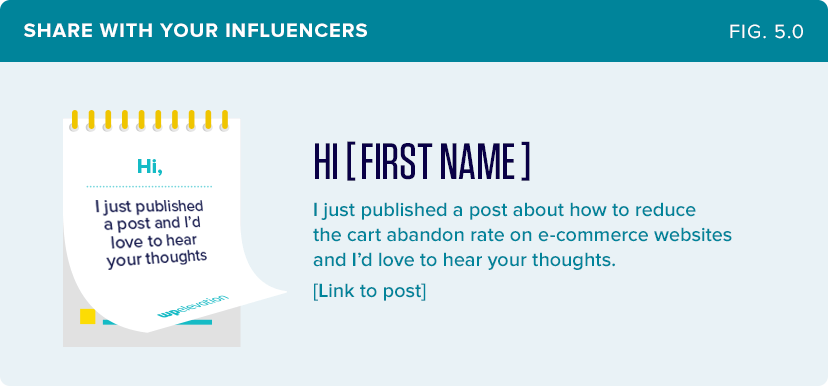
Not everyone is going to respond every time, but I guarantee no one will respond if you don't send any of these emails. You're actually helping these influencers by sharing content with them and, the more of them you can get to share your content, the more influential you will become.

Power Tip
Send this email to anyone in your market that publishes an email newsletter on a regular basis because they are always looking for good content. If you don't know anyone in your market who sends a regular email newsletter, then your job is to find one.
Picking and Choosing Your Clients

So far, we've covered identifying your sweet spot (so you can play to your strengths), designing your perfect client avatar, identifying the top 20 influencers, becoming super helpful, pitching your synopsis and producing helpful content like a machine.
If you've made it this far, then you've proven that you really are committed to improving your business and I would like to congratulate you.
You are already in the top 1% of WordPress consultants who see things through to the end. Don't stop now.
With your newfound position as an authority, it is only a matter of time before new clients start approaching you to help them with their projects. The truth is, most leads coming into your business are a waste of time and will chew up profit. I know that sounds controversial, but it's true.
So, I'm going to help you:
- Get confident saying “No” to clients who are less than perfect
- Pass these clients on without offending them
- Use a tool for validating your instincts so that it's not just a gut feeling
It's NOT A Job Interview
Have you ever had that feeling when speaking with a potential new client that you're in a job interview?
If you've been following along this post so far and taking action, you will end up with some new leads who want to talk to you about their website project. I want to make sure you don't end up in another job interview. It all begins by asking the right questions.
Ask Quality Questions
When someone tells you they need a new website, the first question you should ask them is “Why?”. Chances are they don't know the answer to this question and they want to meet with you over coffee or lunch to help them figure it out. Sound familiar?
It is a waste of your time to let someone pick your brain for an hour and a half for free. It's super valuable to them and, therefore, you should be paid accordingly.
Get comfortable asking these types of difficult questions instead:
- Why do you need a new website?
- What is it that you're hoping to achieve in your business?
- What role do you think the website will play in your business?
- Will the website replace staff members (sales or admin)?
- Will the website help you sell your business?
You need to know the answers to these questions to understand what you're getting yourself into. Building a website to help a business owner exit his company is very different from building a website to generate new sales. It is only through asking better quality questions, that you will get to the core of the problem or the goal they are trying to achieve.
If you identify the problem first, you can prescribe solutions. And if you can prescribe solutions, you'll get paid higher fees.
In order to qualify new leads, you need a website worksheet. A website worksheet can be a word document or a contact form on your website. The worksheet should ask your client a series of questions before you agree to meet with them.
This is an example of my website worksheet in action.
You can even print this out as a PDF and use it as the basis for a paid discovery session. Your client will thank you for this worksheet because it will force them to think about their business and give honest answers.
Validate Your Instincts
Once a client has filled in your website worksheet, review their answers and rate them on each of the following three questions:
- Project: is this the kind of project that fits within our values? For example: I don't work with anyone in the gambling industry.
- Budget: is the budget realistic for what they want to achieve?
- Respect: how much has this client respected my process up until now?
Rate each new lead out of five for each question, for a total score out of 15. Anywhere between 12 and 15 and chances are it's a good fit. 9 to 12 and it's a further conversation. Less than nine and we probably will not do business.
Get your gut feelings out of your gut and onto paper. I promise this will help you get clarity around who the right client is for you based on your sweet spot and the benefits that you offer.
Remember: you only want to work with clients that you can help hit a home run and add massive value to.
That's how you get paid better fees.
I sincerely hope you have enjoyed this post and I'd love to hear your suggestions or questions in the comments. Please try to resist posting things like “this doesn't work” unless you've actually tried it. I'm happy to be challenged on anything I've written here. However, I do appreciate feedback and comments that add value to the conversation.
PS. Don't do this business thing alone! Join our Facebook group, Digital Mavericks, which has over 10k digital creatives who support each other to grow their business and help each other get unstuck.

